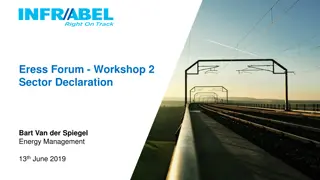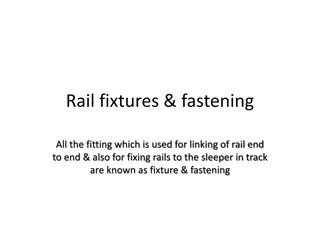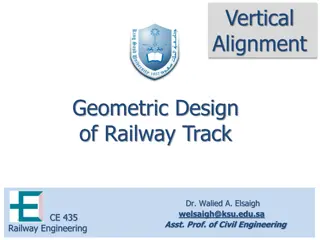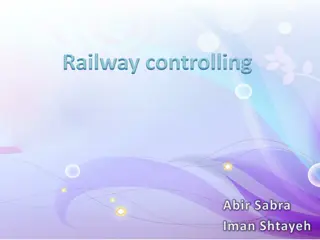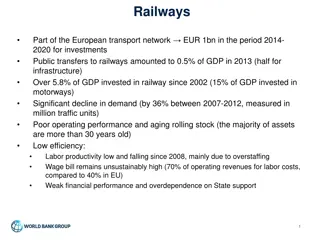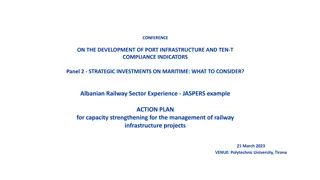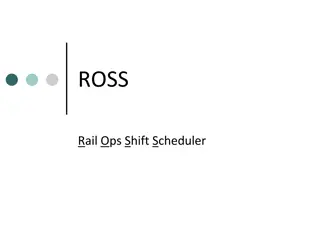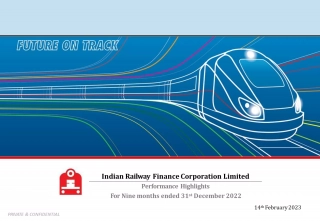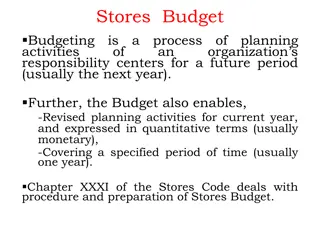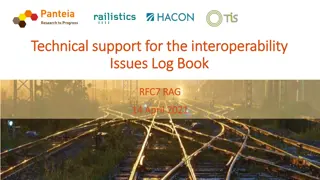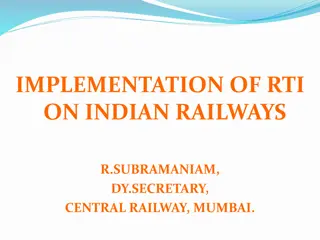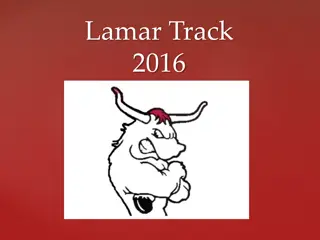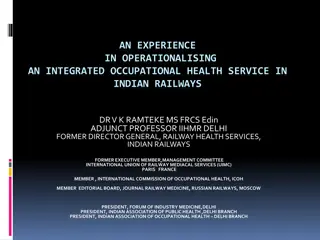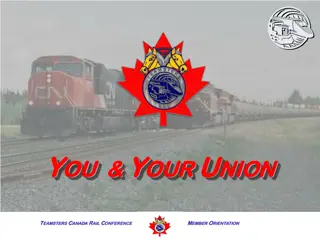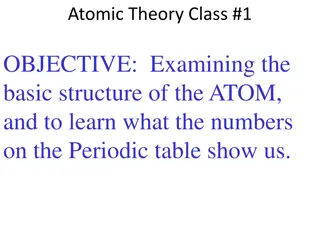Principles of Railway Track Structure and Components
Railway track structures consist of rails, ties (sleepers), ballast, and subgrade. The track ballast is usually crushed stone to support ties, allow drainage, and adjust their position. Modern tracks use high-quality steel rails for heavy loads. Railway sleepers come in various types like timber, steel, cast iron, and concrete, classified as longitudinal or transverse depending on position. The components play crucial roles in maintaining track stability, load transfer, and gauge maintenance.
Download Presentation

Please find below an Image/Link to download the presentation.
The content on the website is provided AS IS for your information and personal use only. It may not be sold, licensed, or shared on other websites without obtaining consent from the author. Download presentation by click this link. If you encounter any issues during the download, it is possible that the publisher has removed the file from their server.
E N D
Presentation Transcript
LEC. NO. 10 Principles of transportation Lecturer :HananAdel
Railway Track The track on a railway or railroad, also known as the permanent way, is the structure consisting of the rails, railroad ties (sleepers) and ballast , plus the underlying subgrade. Traditional track structure The track ballast is customarily crushed stone, and the purpose of this is to support the ties and allow some adjustment of their position, while allowing free drainage.
http://upload.wikimedia.org/wikipedia/commons/thumb/a/a5/Section_through_railway_track_and_foundation.png/440px-Section_through_railway_track_and_foundation.pnghttp://upload.wikimedia.org/wikipedia/commons/thumb/a/a5/Section_through_railway_track_and_foundation.png/440px-Section_through_railway_track_and_foundation.png Section through railway track and foundation showing the ballast and formation layers. The layers are slightly sloped to help drainage.
Rail http://upload.wikimedia.org/wikipedia/commons/thumb/4/4b/Rail_profile.svg/220px-Rail_profile.svg.png Cross-sections of flat-bottomed rail.
Modern track typically uses Hot rolled steel with a profile of an asymmetrical rounded I- beam. Unlike some other uses of iron and steel, railway rails are subject to very high stresses and have to be made of very high-quality steel alloy. It took many decades to improve the quality of the materials, including the change from iron to steel. The heavier the rails and the rest of the trackwork, the heavier and faster the trains the track can carry.
Rail support (sleeper/tie) A railroad tie ( a railway sleeper ) is a rectangular object on which the rails are supported and fixed. The tie has two main roles: to transfer the loads from the rails to the track ballast and the ground underneath, and to hold the rails to the correct width apart (to maintain the rail gauge). They are generally laid transverse (perpendicular) to the rails.
Railway Sleepers - Types of Sleepers - Longitudinal, Transvers Depending upon the position in a railway track, sleepers may be classified as: 1. Longitudinal Sleepers 2. Transverse Sleepers sleepers may be classified as: Timber/wooden sleepers Steel sleepers Cast Iron Sleepers Concrete Sleepers
Timber/Wooden Sleepers The timber sleepers nearly fulfilled all the requirements of ideal sleepers . The most important advantages of Timber Sleepers They are much useful for heavy loads and high speeds They have long life of 10-12 years depending upon the climate, condition, rain, intensity, nature of traffic, quality of wood etc They are able to accommodate any gauge Can be used with any section of rail Can be handled and placed easily Cheaper than any other types of sleepers
Disadvantages of Timber Sleepers Liable to be attacked by vermin so, they must be properly treated before use Liable to catch fire They are affected by dry and wet rot Become expensive day by day Life is shorter compare to others
Steel sleepers Advantages of Steel Sleepers Have a useful life of 20-25 years. Free from decay and are not attacked by vermins Connection between rail and sleeper is stronger Good scrap value Suitable for high speeds and load
Disadvantages of Steel sleepers Liable to corrosion by moisture Cannot be used for all sections of rails and gauges Very costly
Cast Iron Sleepers Advantages of Cast Iron Sleepers Long life upto 50-60 years High scrape value as they can be remolded They are not attacked by vermin
Disadvantages Cast Iron Sleepers They are prone to corrosion and cannot be used in salty formations . Not suitable for track with circuited portions of railways Difficult to maintain the gauge Difficult to handle and may be easily damaged Lack of good shock absorber They are expensive
Concrete sleepers Advantages Concrete Sleepers Durable with life range from 40-50 years They can be produced on large quantities by installing a plant Heavier than all other types thus giving better lateral stability to the track suitable for use in track circuited lines They are not attacked by corrosion Free from attacks of vermin and decay, suitable for all types of soils Prevent buckling more efficiently Initial cost is high but proves to be economical in long run Effectively and strongly hold the track to gauge Inflammable and fire resistant
Disadvantages Concrete Sleepers Difficult to be handled Difficult to be manufactured in different sizes Can be damaged easily while loading and unloading .Gauge http://upload.wikimedia.org/wikipedia/commons/thumb/4/42/Gauge_EN.svg/350px-Gauge_EN.svg.png Measuring rail gauge
During the early days of rail, there was considerable variation in the gauge used by different systems. Today, 60% of the world's railways use a gauge of (4 ft 81 2in), known as standard or international gauge. Gauges wider than standard gauge are called broad gauge; narrower, narrow gauge.
Foundation Railway tracks are generally laid on a bed of stone track ballast, in turn is supported by prepared earthworks known as the track formation. The formation comprises the subgrade and a layer of sand or stone dust . The sub-grade layers are slightly sloped to one side to help drainage of water.






